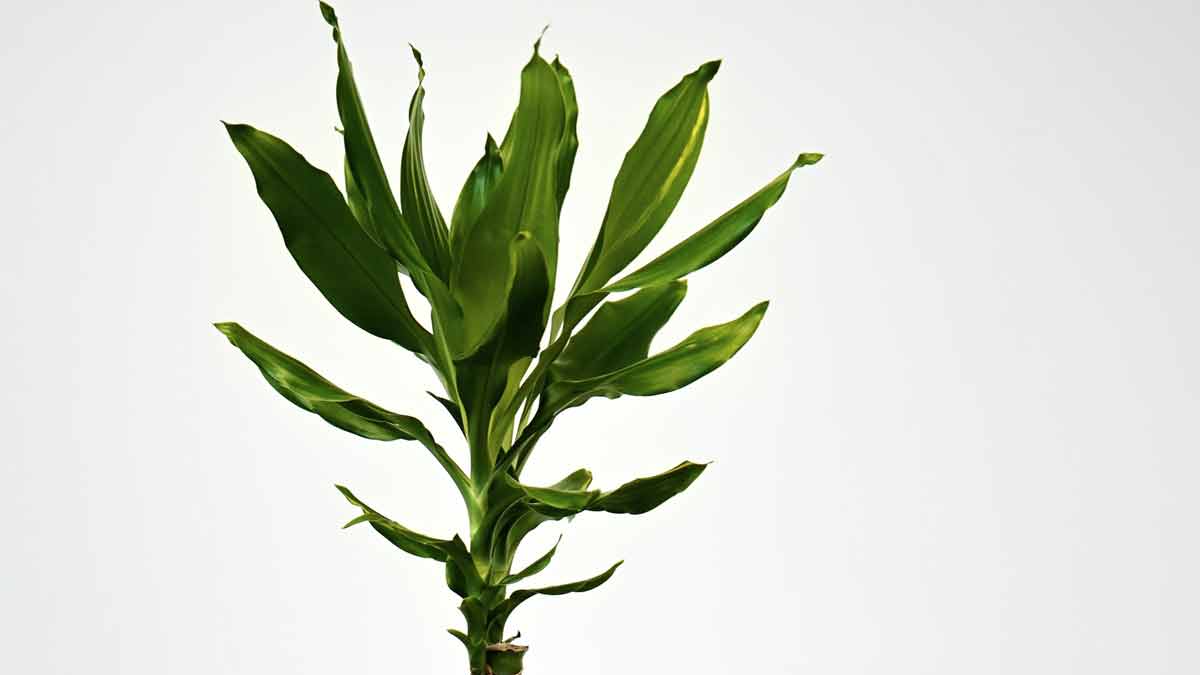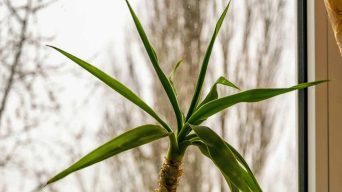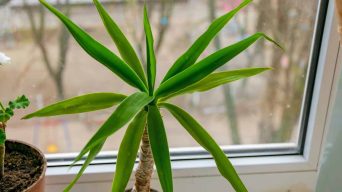Dracaena, or dragon tree, are popular houseplants known for their durability and easy care.
However, even these tough plants can fall victim to root rot if they are not cared for properly.
Root rot is a severe condition that can kill your Dracaena if left untreated.
Fortunately, there are some things you can do to save your plant if it has developed root rot.
This article will teach you everything you need to know about root rot in dracaenas, including how to identify it and save your plant.
What is Root Rot?
Root rot is a disease that can affect any plant, but it is especially common in plants grown in containers.
Root rot is caused by fungi or bacteria that attack the plant’s roots.
The fungi or bacteria invade the roots and break down the tissue.
This can cause the roots to become black and mushy.
Root rot can spread quickly and kill a plant within days or weeks if it is not treated.
What Causes Root Rot?
Knowing what causes root rot in dracaenas is essential before trying to fix the problem.
There are several reasons why dracaenas experience root rot.
The most common causes are:
Overwatering
Excessive watering is the primary factor leading to root rot in dracaenas.
When the roots of a dracaena are constantly wet, they start to break down and rot.
This is because the roots need oxygen to function correctly, and waterlogged soil doesn’t have enough oxygen for the roots to breathe.
This can happen even if you only water your Dracaena plant once a week.
If the soil is constantly wet, the roots will start to rot.
Underwatering
While overwatering is the most common cause of root rot, underwatering a Dracaena can also cause the roots to rot.
If the roots don’t have enough water, they will start to dry out and die.
This makes it even harder for the roots to get the oxygen they need to function correctly.
So when the damaged roots are watered, they can’t take up the water and start to rot.
Poor drainage
Poor drainage is another common cause of root rot in dracaenas.
When the soil doesn’t drain well, the roots can’t get the oxygen they need and start to rot.
This is often a problem when dracaenas are grown in pots that don’t have drainage holes.
If the pot doesn’t have drainage holes, the water will sit in the bottom of the pot, and the roots will start to rot.
Compacted soil
Compacted soil can also cause root rot in dracaenas.
When the soil is too dense, it doesn’t allow water to drain properly, and the roots can’t get the oxygen they need.
This is often a problem when dracaenas are grown in soil that’s too heavy or in a pot that’s too small.
Fungal diseases
Fungal diseases are another common cause of root rot in dracaenas.
These diseases attack the roots and cause them to rot.
Fungi are often present in the soil that’s too wet or doesn’t drain well.
Fungal infections can also be caused by using infected potting mix or soil or transmitted by fungus gnats.
Root Damage
Root damage is another common cause of root rot in dracaenas.
This can happen if the roots are damaged when repotting the plant or if insects damage them.
Once the roots are damaged, they’re more susceptible to fungal infections and other diseases.
What Does Dracaena Root Rot Look Like?
Now that you know what causes root rot in dracaenas, it’s time to learn what it looks like.
There are several signs that your Dracaena plant has root rot.
The most common signs are:
Wilting Leaves
The first sign of root rot is usually wilting leaves.
The Dracaena leaves will start to droop and look limp.
This is because the roots can’t take up water from the soil, and they’re not getting enough water to the leaves.
Yellowing Leaves
Yellowing leaves are another common sign of root rot.
Dracaena leaves will turn yellow and then brown and fall off the plant.
This is because the leaves are not getting enough water, and they’re dying.
Black Spots on the Leaves
Black spots on the leaves are another common sign of root rot.
Fungal diseases usually cause these spots.
The fungi attack the Dracaena leaves and cause them to turn black.
Mushy and Black Roots
If you suspect your Dracaena has root rot, the best way to confirm it is to check the roots.
Healthy roots are white or light brown.
Roots that are starting to rot will be mushy and black.
As the root rot progresses, the roots start to break down and fall apart.
Soggy Soil
Another way to confirm that your Dracaena has root rot is to check the soil.
If the roots are rotting, the soil will be soggy and wet.
This is because the roots cannot take up water from the soil, so the water sits in the pot.
Bad Odor
Another common sign of root rot is a foul odor.
If the roots are rotting, they will produce a foul smell.
This smell is often described as sour or musty.
The smell will be strongest near the roots.
Stunted Growth
If your Dracaena has root rot, it will stop growing.
Root rot interferes with the plant’s ability to take up nutrients from the soil, so the plant will stop growing.
The leaves may also start to die back.
How To Treat Dracaena Root Rot
If you think your Dracaena has root rot, treating it as soon as possible is essential.
Root rot is a severe disease that can kill your plant.
The good news is that root rot is often treatable if caught early.
Here is a step-by-step guide to treating root rot in dracaenas:
1. Remove the Plant from the Pot
The first step is to remove the plant from the pot.
Carefully tip the pot on its side and slide the plant out.
Be careful not to damage the roots.
2. Inspect the Roots
Once the plant is out of the pot, inspect the roots.
Look for signs of root rot, such as mushy or black roots.
If more than half of the roots are affected, throwing the plant out is best.
If only a few roots are affected, you can try to save the plant.
3. Remove the Affected Roots
The next step is to remove the affected roots.
Use a sharp knife or pruning shears to cut away the affected roots.
Be sure to disinfect your tools after each cut to avoid spreading the disease.
4. Clean the Roots
After you’ve removed the affected roots, it’s time to clean the remaining roots.
Use a soft brush to remove any dirt or debris from the roots gently.
You can also rinse the roots with clean water.
5. Discard the Soil
Once the roots are clean, it’s time to get rid of the old soil.
This is important because the old soil may be contaminated with the root rot fungus.
Throw away the old soil and do not use it for other plants.
6. Wash the Pot
After you’ve removed the old soil, it’s essential to wash the pot.
This will remove any dirt or debris that may be contaminated with the root rot fungus.
Wash the pot with soapy water and then rinse it with clean water.
7. Repot the Plant in Fresh Soil
Once the pot is clean, it’s time to repot the plant.
Use a fresh, sterile potting mix to fill the pot.
Be sure to use a drainage hole pot to allow excess water to drain out.
8. Water Lightly
After repotting, water the plant lightly.
Do not overwater the plant because this can lead to root rot.
Allow the soil to dry out between waterings.
9. Monitor the Plant
It’s essential to monitor the plant closely after treatment.
Root rot is a severe disease that can kill your plant.
Be sure to check the roots regularly for signs of rot.
If you see any new symptoms, be sure to treat them immediately.
With proper care, your Dracaena should recover from root rot and start to grow again.
How To Prevent Dracaena Root Rot
Root rot is a severe disease that can kill your Dracaena plant.
The best way to prevent root rot is to avoid it in the first place.
Here are a few tips to help you avoid root rot:
1. Use Well-Draining Soil
One of the most important things you can do to prevent root rot is to use well-draining soil.
Soil that doesn’t drain well will hold too much water, leading to root rot.
Be sure to use a potting soil mix that contains perlite or sand to improve drainage.
2. Don’t Overwater
Another essential thing to remember is not to overwater your Dracaena plant.
It’s important to water deeply, but not too often.
Allow the soil to dry out between waterings.
If you’re unsure how often to water, check the soil before watering.
If the top inch of soil is dry, it’s time to water.
3. Use Pots with Drainage Holes
When choosing a pot for your plant, be sure to choose one that has drainage holes.
Pots without drainage holes can lead to root rot because they don’t allow excess water to drain.
Be sure to use a pot that has at least one drainage hole.
4. Avoid Watering the Leaves
Another way to prevent root rot is to avoid watering the leaves.
Watering the leaves can cause the water to collect on the plant and can lead to root rot.
Instead, water the soil directly.
5. Place the Plant in a Bright Location
Root rot is often caused by too much water and not enough light.
To prevent root rot, place your plant in a sunny location.
Choose a spot that receives bright indirect sunlight.
Avoid placing your plant in direct sunlight, as this can scorch the leaves.
6. Provide Good Air Circulation
Good air circulation is vital for preventing root rot.
Be sure to place your plant in an area with good air circulation.
Avoid placing your plant in a cramped space.
You can also help improve air circulation by using a fan.
7. Repot the Plant Regularly
One of the best ways to prevent root rot is to repot your plant regularly.
This will allow you to eliminate any contaminated soil and replace it with fresh, sterile soil.
Be sure to repot your plant every two years or so.
8. Inspect the Roots Regularly
It’s also essential to inspect the roots regularly.
Check the roots for signs of rot, such as mushiness or discoloration.
If you see any signs of root rot, be sure to treat it immediately.
9. Disinfect Your Tools
Another essential thing to remember is to disinfect your tools.
Root rot is a severe disease that can spread quickly.
Be sure to disinfect your tools after each use.
You can do this by soaking them in a solution of bleach and water.
10. Quarantine New Plants
If you’re adding new plants to your collection, quarantine them.
This will help prevent the spread of root rot.
Place new plants in a separate area from your other plants and monitor them closely for signs of disease.
If you see any signs of root rot, be sure to treat it immediately.
Final Thoughts
Preventing root rot in Dracaena plants starts with proper watering and drainage.
Allowing the soil to dry out entirely between waterings is critical, as is using a well-draining potting mix.
Check the drainage holes in the bottom of your pot to ensure they are not blocked.
If you notice any signs of root rot, such as yellow leaves or mushy stems, act quickly to remove the affected plant parts and improve the growing conditions.
With proper care, your Dracaena can recover from this condition and thrive for many years.dracaena root rot







